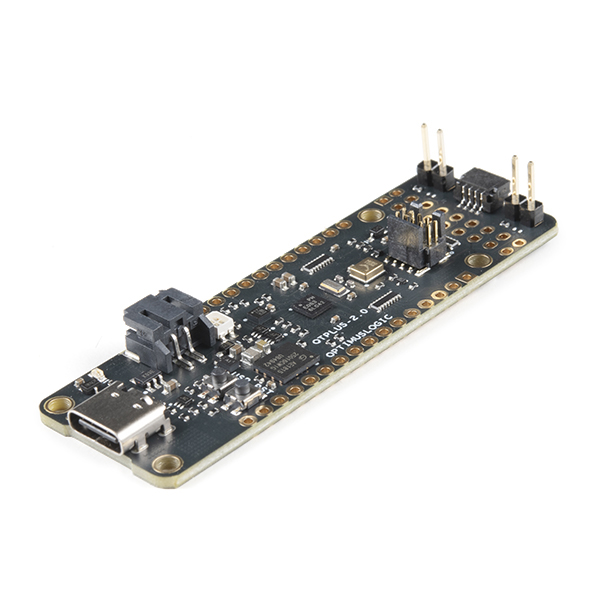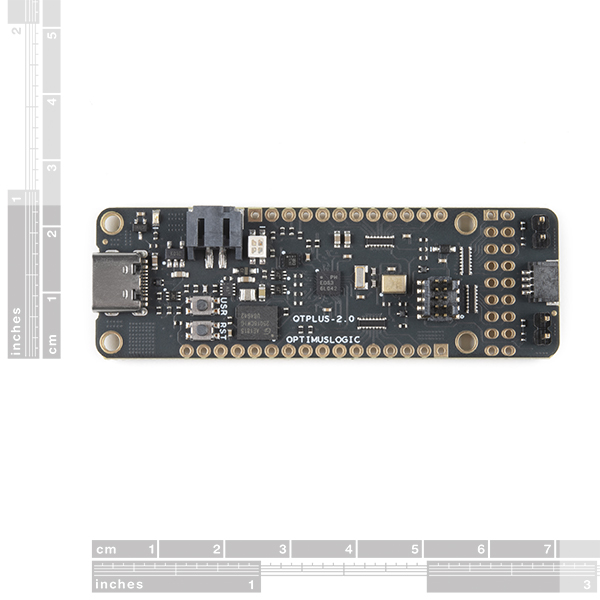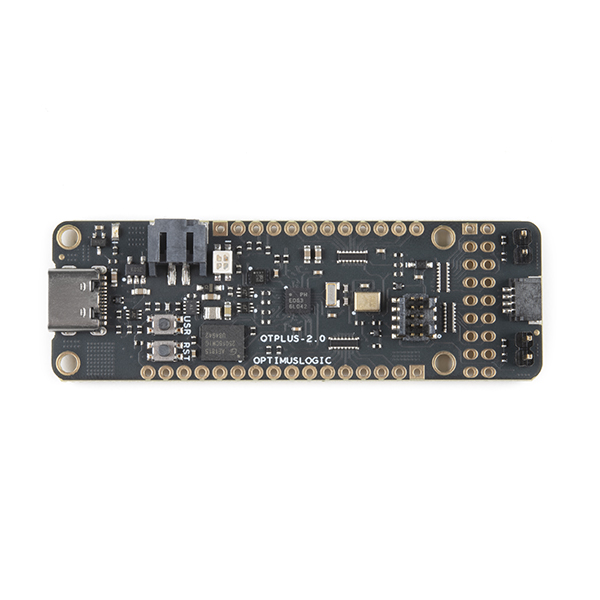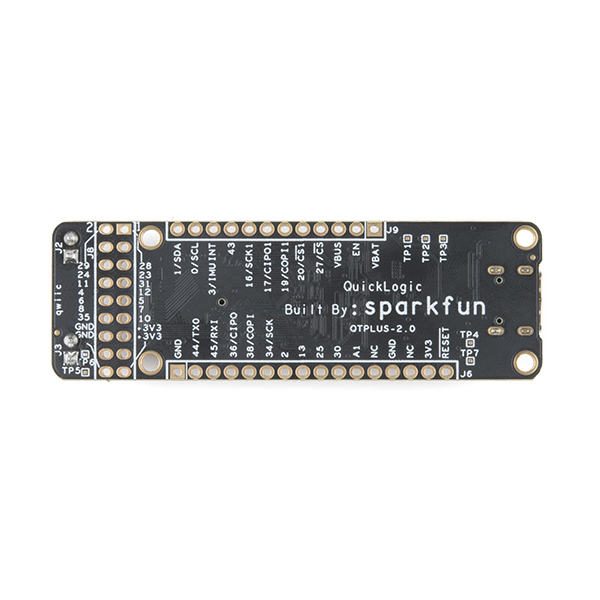SparkFun QuickLogic Thing Plus - EOS S3
The SparkFun QuickLogic Thing Plus EOS™ S3, is a small form factor system ideal for enabling the next generation of low-power Machine Learning (ML) devices. The QuickLogic Thing Plus is powered by QuickLogic’s EOS S3, the first eFPGA-enabled Arm Cortex©-M4F MCU to be fully supported with Zephyr RTOS and FreeRTOS. Unlike other development boards which are based on proprietary hardware and software tools, the QuickLogic Things Plus is based on 100% open source hardware, compatible with the Feather form factor, and is built around 100% open source software (with support for FreeRTOS, Zephyr, nMingen, Docker, and SymbiFlow).
Between the onboard LiPo battery connector and charging circuitry, wake-on-sound PDM microphone, and low-power, three-axis accelerometer, this Thing Plus board is ideal for wearable, voice, gesture sensing applications. The strong firmware support for the microphone and accelerator make it easy to move sensor data into the embedded FPGA. From there, you can use SensiML, TensorFlow Lite, or other tools to train and run embedded machine learning algorithms specific to your application. The board also includes a Qwiic connector to quickly interface with an ecosystem of 150+ I2C-compatible boards such as sensors, RFID readers, displays, keypads, and relays.
The SparkFun Qwiic Connect System is an ecosystem of I2C sensors, actuators, shields and cables that make prototyping faster and less prone to error. All Qwiic-enabled boards use a common 1mm pitch, 4-pin JST connector. This reduces the amount of required PCB space, and polarized connections mean you can’t hook it up wrong.
- EOS S3 MCU + eFPGA SoC
- Arm® Cortex®-M4F Microcontroller
- up to 80 MHz operating frequency
- up to 512 KB SRAM
- Embedded FPGA (eFPGA)
- 2400 effective logic cells
- 64 Kb RAM
- Arm® Cortex®-M4F Microcontroller
- Thing Plus Form Factor
- Breadboard-compatible 0.1" (2.54 mm) pitch headers
- 2.75" x 0.9" (70 mm x 22.9 mm) footprint
- All 20 Feather-defined GPIO + 14 additional GPIO
- Interfaces
- SWD programming connector for use with USB-TTL converter
- USB data signals are tied to eFPGA programmable logic
- UART available via I/O headers
- I2C available via I/O headers, and Qwiic Connector
- SPI
- I2S
- Storage
- 16 Mbit SPI NOR flash - GigaDevice GD25Q16CEIGR
- Sensors
- 3-Axis 12-bit Accelerometer - STMicro LIS2DH12TR
- Digital pulse density modulation (PDM) microphone with Wake-on-Sound (WoS) feature - Vesper VM3011-U1
- User Interfaces
- RGB LED
- User pushbutton
- Reset pushbutton
- Power
- USB Type-C connector (regulated to 3.3 V)
- Single Cell LiPo battery
- On-board charging circuitry - Microchip MCP73831/2
- Standard LiPo JST connector
- Software
- Machine Learning
- TensorFlow Lite
- SensiML
- Real-time Operating Systems
- Zephyr RTOS
- FreeRTOS
- FPGA Tools
- SymbiFlow
- Renode
- Machine Learning
- Schematic
- Cadence Board File
- Board Dimensions
- Graphical Datasheet
- Hookup Guide
- QuickLogic EOS E3
- Software
- Machine Learning
- TensorFlow Lite
- SensiML
- Real-time Operating Systems
- FPGA Tools
- Machine Learning
- Qwiic Information Page
- GitHub Hardware Repo
- Compare Thing Plus Boards
SparkFun QuickLogic Thing Plus - EOS S3 Product Help and Resources
QuickLogic Thing Plus (EOS S3) Hookup Guide
July 22, 2021
This guide provides users with functional descriptions, configuration options for the QuickLogic Thing Plus EOS S3. It also serves as a “Getting Started” and “How To” guide.
Core Skill: Programming
If a board needs code or communicates somehow, you're going to need to know how to program or interface with it. The programming skill is all about communication and code.
Skill Level: Experienced - You will require a firm understanding of programming, the programming toolchain, and may have to make decisions on programming software or language. You may need to decipher a proprietary or specialized communication protocol. A logic analyzer might be necessary.
See all skill levels
Core Skill: Electrical Prototyping
If it requires power, you need to know how much, what all the pins do, and how to hook it up. You may need to reference datasheets, schematics, and know the ins and outs of electronics.
Skill Level: Rookie - You may be required to know a bit more about the component, such as orientation, or how to hook it up, in addition to power requirements. You will need to understand polarized components.
See all skill levels
Comments
Looking for answers to technical questions?
We welcome your comments and suggestions below. However, if you are looking for solutions to technical questions please see our Technical Assistance page.
Customer Reviews
No reviews yet.





There have been issues with getting data flashed to the board. Following this forum post for updates. https://forum.sparkfun.com/viewtopic.php?f=176&t=56658&p=238960&hilit=quicklogic+thing#p238960